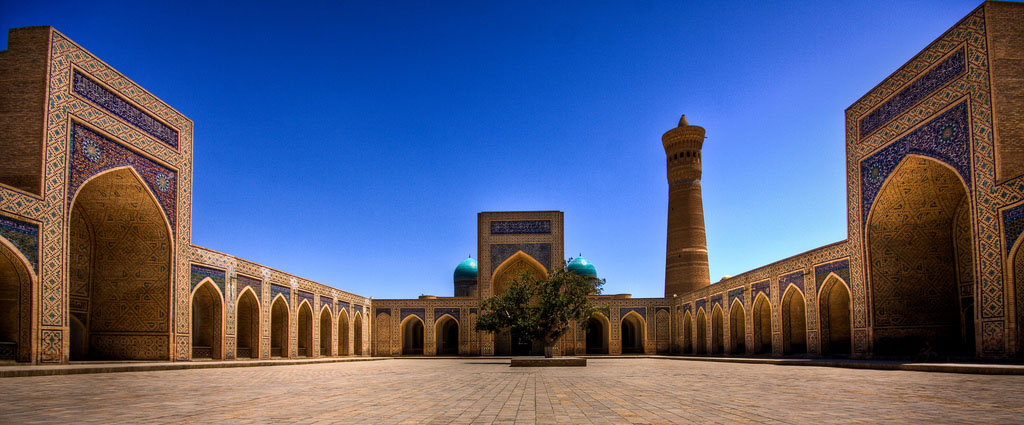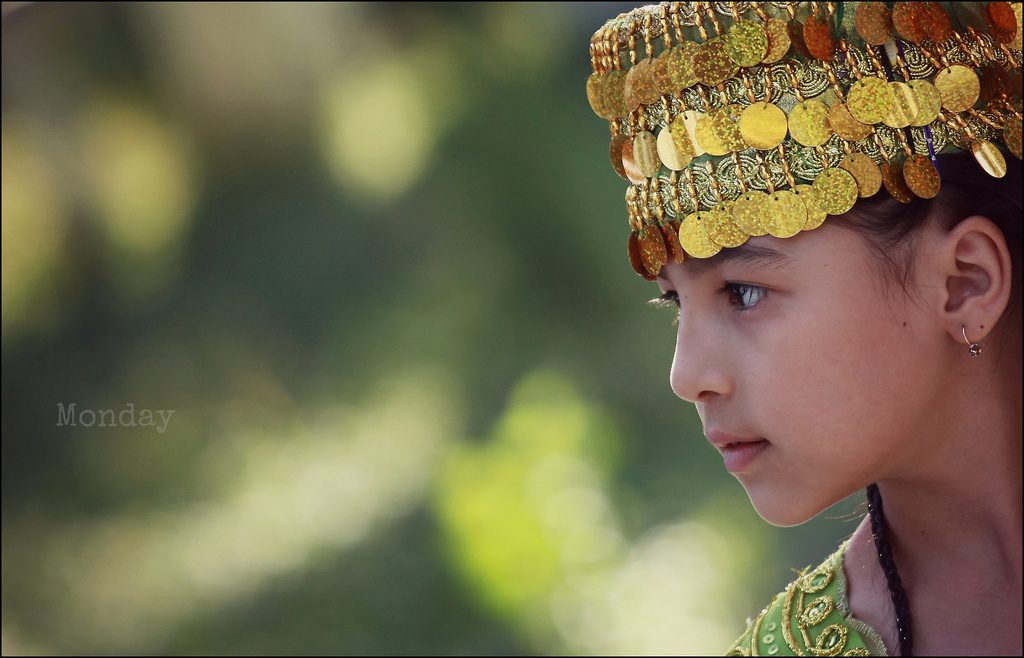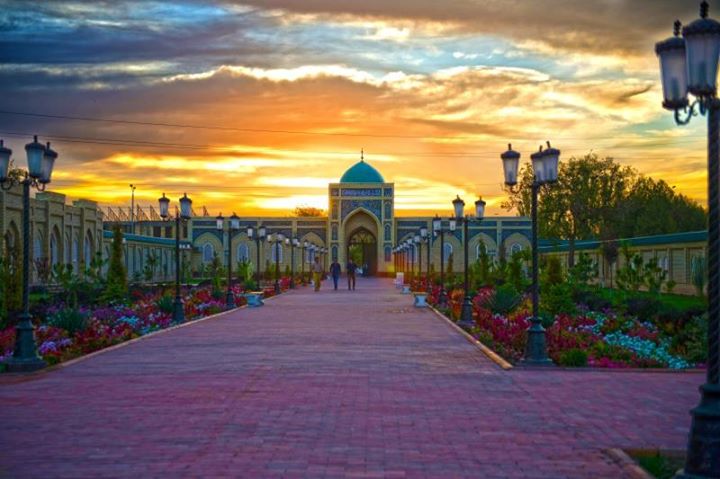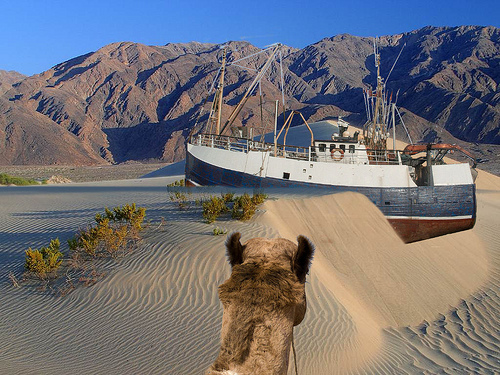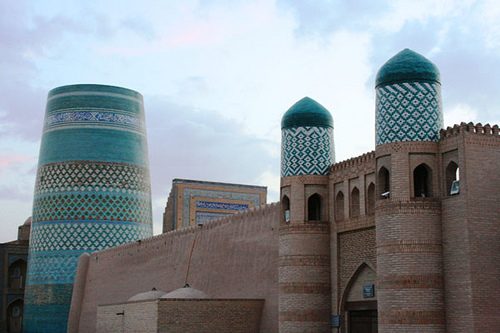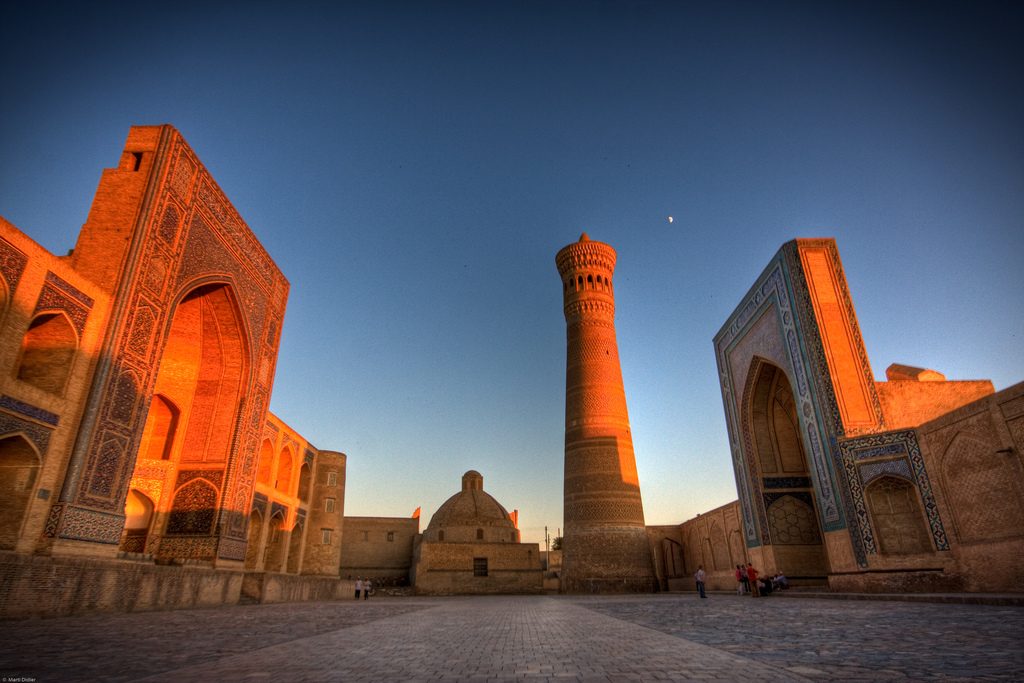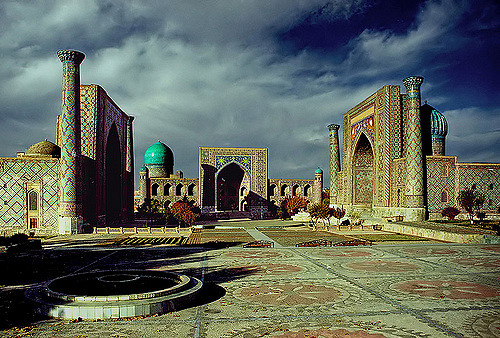General
Day 1: Arrival Tashkent
Arrival to Tashkent Airport. Transfer is to the hotel. Check in to the hotel. Rest & Overnight is in the hotel.
Day 2: Tashkent – Fergana (domestic flight)
Breakfast at the hotel. Half-day tour in Tashkent: Independence square (Red square in former USSR, Main Square of the country). Square was erected as a symbol of victory over fascism in World War II. Territory of Independence includes several main administrative buildings. Broadway – walking street between independence square and Amir Timur square. The street is so-called show room for local artists and cozy place for tasting European and Uzbek cuisine. Amir Timur square – one of the central squares of Tashkent, erected on behalf of national hero – Amir Timur. The square symbolizes sovereignty and power of Uzbek nation. Old city – old part of Tashkent city, the area, which preserves the traditional Uzbek style: Chorsu Bazaar, Kukaldash Madrasah (16th.c) and Hast Imam complex – the Islamic heart of the country. This architectural complex consists of Barak-Khan Madrasah, Tilla sheikh mosque, Muyi Muborak Madrasah, Kaffal shashi mausoleum, Namazgoh mosque, as well as the new Khazrati Imam mosque and the muftiate building (the muslim board of Uzbekistan) built in 2007. Muyi muborak Madrasah (16th c). Moreover, Madrasah exhibits one of the Islamic relics – the Othman Quran, the world’s oldest Quran copy dating back to 8th c. Quran belonged to Othman Ibn Affan, the Third Caliph (of the four righteous Caliphs who succeeded the prophet Muhammad). Othman was killed by non-muslims in 8th century. His blood spred over the Quran. You still can see blood drops on Quran’s pages. Transfer to domestic airport of Tashkent, regisration and flight for Fergana as per time-table. Upon arrival transfer to your hotel, check in and overnight is at the hotel.
Day 3: Fergana – Tashkent
Visiting Fergana regional museum – The fund of the museum has a fine collection of items, relating to all periods of history, culture and art of Fergana valley. The museum collection has more than 80 thousand. Visiting national park of Fergana. Transfer to Margilan and visiting Silk producing factory in Margilan – All parts of the production process are undertaken here, from the feeding of the silk worms with mulberry leaves, through dyeing with natural vegetal and mineral dyes, to the weaving of the final cloth, and it is fascinating to follow it step by step. Transfer to Fergana train station, board the train and departure for Tashkent (approximately departure 16:00). Arriving Tashkent train station at 20:25, transfer to your hotel and overnight is at the hotel.
Day 4: Tashkent – Nukus
Transfer to domestic airport of Tashkent, regisration and flight for Nukus as per time-table. Upon arrival transfer to your hotel. Full day tour in Nukus: Museum of Savitsky in Nukus – exhibits the masterpieces of forbidden art. Museum collects 20th century Russian avant-garde paintings, works of Sokolov, Komarovskiy and Amaravella group. The curator of the Karakalpakstan state museum of art collected the artworks in 1960s. He purchased banned works from persecuted soviet artists, sometimes free. He carefully preserved and finally exhibited them in this remote central Asian art-house. Mizdakhan sight outside of Nukus – today Mizdakhan is a necropolis. Centuries-ago, it was ancient city. Scientists note that 1000 years back it was the second largest city in the region. Archaeological findings confirmed that area was continuously captured from 4th century b.c. till about 14th century a.d.. Chilpyk – 2200 years-old Zoroastrian ancient monument – Dakhma Chilpyk (shylpyk, chilpak kala). Returning to the hotel and overnight.
Day 5: Nukus – Muynak – Khiva
You can shoot some great photos early in the morning at dawn. After breakfast visit to picturesque canyons of Ustyurt and drive towards Moynaq through the dried bottom of the sea. On arrival in Moynaq visit the graveyard of Ships in ex-shore of the Aral Sea and town museum. After visits drive to Khiva. Overnight is at the hotel.
Day: 6 Khiva
Breakfast at the hotel. Full day tour in Khiva: Ichan-Qala is the inner city in Khiva rounded with strong walls. Centuries old sound buildings, palaces, mosques, Madrasahs, Mausoleums, Minarets, Caravan-Sarais and Bathhouses transformed Ichan-Qala into unique city-monument. Ichan-Qala consists of over 400 traditional dwelling houses and about 60 architectural monuments. In 1969 Ichan-Qala was designated a historical and architectural conservation area. Muhammad Arang Khan, son of Muhammad Anush Khan in 1686, led Kunya-Ark fortress – foundation to the Kunya Ark citadel. In XVIII century, citadel was separated from the Ichan-Qala and became “city in the city”. Primarily Kunya Ark consisted of Khans’ office, reception hall, harem, closed and outdoor mosque, and mint yard, back office with mews, storehouse and workshop. Citadel served as a military base, but in XIX and XX century embodied many other buildings. Kalta Minor minaret – stands for ‘short minaret’, unfinished tower adjoining to Muhammad Amin Khan Madrasah. Legends say that architect in-charge for the construction was executed by the Khan who found out that master got better offer from Bukhara Khan to build higher minaret in Bukhara. After this, no any architect risked to complete the minaret. Tash Khouvli palace – stone palace is located in the eastern part of Ichan-Qala. This is the sample of Khorezm architectural mastership of 1830s. Allakuli-Khan who ordered to build the palace directed a big amount of wealth for the construction of this palace as the period was one of the flourishing of Khorezm Empire. At the end of excursion returning back to the hotel. Overnight is at the hotel.
Day 7: Khiva – Bukhara (440 km, 7 hours’ drive)
Breakfast is at the hotel. Morning departure for Bukhara, the way goes thru Kizilkum desert (around seven hours’ drive thru the desert). Stop en-route to enjoy views of Amu Darya River and the desert. Arrival to Bukhara, check in to the hotel. Free time in Bukhara and overnight is at the hotel.
Day 8: Bukhara
Breakfast at the hotel. Full day tour in Bukhara: Citadel Ark (4th b.c.) – Ark citadel is the most ancient citadel in Bukhara. Ark citadel was erected on the Registan Square and is the symbol of haughtiness, power and greatness. Fortress was the sample of city life. Ark served as a palace of several dynasties of Bukhara Empire. Samanids mausoleum (9-10th c.) – this mausoleum of Ismail Samanids’ dynasty. This masterpiece of architecture was built in 9th -10th century. Mausoleum is the resting-place of Ismail Samani – a powerful and influential Amir of the Samanid dynasty, one of the Persian dynasties that ruled in central Asia in 9th and 10th centuries. Chashma Ayub (14th c.) – means Job’s well. According to legend, Prophet Job (Ayub) while crossing this area found out that the local people were exhausted from dry climate and having no water. He tapped his stick on the land and opened a well of purest and cold water. The water of this well is still pure and healing. Amir Timur ordered to erect mausoleum over this well. Mausoleum has uncommon design of Bukhara architecture. Bolo-Hauz mosque (beginning of the 20th c.) – known also as the mosque of forty columns. The mosque was built in honor of Bukhara governor Abu-Fayud Khan. Ruler personally performed Jumah namaz in this mosque. Shopping domes – Toki Saraffon, Toki Telpak Furushon & Toki Zargaron domes. Madrasah Nodir Divan Begi – Madrasah is one of the most popular Madrasah in Bukhara and part of Lyabi House Ensemble. Today Madrasah is the place of folklore performances and oriental art exhibition. Complex Lyabi-Khauz (14-17th c.) – the central sightseeing place of Bukhara city. Complex was built in 16th-17th century and still main tourist attraction and favorite place of local people. Poi Kalon complex – the unique sample of architectural art of Bukhara. Poi-Kalon, ‘The Foot of the Great’, consists of three structures built in the 12th – 16th centuries: Kalon minaret, Kalon mosque and Mir Arab Madrasah. After the excursion, you will return to the hotel. Free evening and overnight at the hotel.
Day 9: Bukhara (Surroundings)
Breakfast at the hotel. Bahauddin Naqshbandi complex – located several km from Bukhara. Memorial complex of the famous Sufi Leader and Philosopher. The complex is one of the Muslim pilgrimage place for all people of Islamic world. Sheikh Bakhauddin Nakshbandi was one of the spiritual masters of Amir Timur. Today complex consists of mosques of Kushbegi and Muzafarohana, courtyard with pool, madrasah, and burial vault of Bukhara rulers and Dakhma upon the tomb of Saint Bakhauddin Nakshbandi. Sitorai Mohi Hosa complex – is the countryside residence of Bukhara Emirs, located four km away from the city. The palace is the sample of combination of various architectural styles. Emir named the palace on behalf of his wife who died young “Star – like and moon- like Palace”. Chor Bakr memorial complex – is the town of the dead, located in Sumiton village, five km from Bukhara. Complex symbolizes the four sides of the earth and interprets that all people are equal. Construction of the complex began during the Samanids reign until 16th century. Returning to the city and overnight at the hotel.
Day 10: Bukhara – Yurts camp of Nurata (310 km, 4 hours)
Breakfast at the hotel. Drive to Nurata city. Upon arrival city tour in Nurata: visit the Khasan- Khuseyn Mosque (XVI-XVII cс.), blacksmith’s and potter’s workshops and a sacred pond with sacred fishes – a place for pilgrimage by Muslim worshipers in Nurata. In addition, to visit are Medressa of Sheihun Hasan Nury, Mamazgokh Mosque (XIVc) and remains of so called “Alexander the Great’s Fortress”. Continue the drive to yurts camp in dessert, arrival, dinner at fire and overnight is at yurts camp.
Day 11: Nurata – Samarkand
Breakfast at the hotel. Drive to Samarkand city. Upon arrival city tour in Samarkand. Registan square – the complex of three historical building: Madrasah Ulugbek (15th c.), Madrasah Sher-dor (17th c.), Madrasah Tilla-Kori (17th c.) – the visiting card and the main attraction spot of Samarkand. Architectural complex Shakhi-Zindeh (11-15th c.) – the name Shah-I-Zinda (meaning “the living king”) comes together with the legend about Kusam Ibn Abbas, the cousin of the prophet Muhammad who was buried here. As if, he came to Samarkand with the Arab invasion in the 7th century to preach Islam. Popular legends say that he was beheaded for his faith. However, he took his head and went into the deep well (garden of paradise), where he is still living now. Mausoleum Guri Emir – Tamerlane’s tomb (14-15th c.) – Gur-e Amir means “Tomb of the King”. This architectural complex with grandiose dome contains the tombs of Tamerlane, and his sons Shakhrukh, Miranshakh, grandsons Ulugbek and Muhammad Sultan. The tomb of Timur’s spiritual master Sayyid Baraka. Bibi Khanum Mosque – name of the mosque translated as the “Elder wife” and it was built in honor of favorite Tamerlane’s wife, after his successful campaign in India. Overnight is at the hotel.
Day 12: Samarkand
Breakfast is at the hotel. Full day city tour of Samarkand: Ulughbek observatory – built in 15th century by Ulughbek, one of the most famous Samarkand rulers and scientist. Working in observatory Ulughbek created in 1437 the “Zidji Guragoni” catalog, which had information about 1018 celestial bodies. Unfortunately, he was killed by per order of his own son. Local Broadway surrounded with souvenir shops, teahouses, sweets workshops and etc. Visiting National bazaar Siab – oriental bazaar, where easy to find Uzbek traditional handmade products and local sweets.Carpet factory – the unique handmade carpet factory where over 400 women sewing carpets without any modern technologies. Factory preserves old traditional style in producing carpets. Samarkand paper workshop – Samarkand’s antique paper making workshop. Overnight is at the hotel.
Day 13: Samarkand – Shakhrisabz – Samarkand
Breakfast at the hotel. Drive to Shahrisabs – the Birthplace of Amir Timur. Upon arrival meet with your local guide and excursion in Shahrisabs: Ak Saray Palace – The idea of Amir Timur turned into reality. He has built the palace, which had no equal in its grandeur and beauty. On the main portal of the Palace was written: “If you want to know about our power – look at our buildings”. Jahongir mausoleum – was built especially for the eldest son of Amir Timur, who died in battle when he was twenty years old. When the son died, the ruler has mourned for a long time (many say that his grief has lasted for 30 years). Jahongir’s body was moved from Samarkand to Shahrisabs and three years later on his burial place was built mausoleum, named after his. Dorus Siadat and Dorus Tillavat memorial complexes – Memorial complex Dorus Saodat means «The House of power”. It was built like a necropolis for Amir Timur and all his descendants and relatives. Dorut Tillavat – translates as “House of meditation and contemplation.” After excursion drive to Samarkand. Upon arrival, overnight is at the hotel.
Day 14: Samarkand – Tashkent
Breakfast at the hotel. Drive to Tashkent, en route stop over at Djizakh Mountains to see “Gates of Amit Timur” – huge hole in mountains, opened by order or Amir Timur to let his army cross the mountains. Upon arrival Tashkent, check in to the hotel and time for rest. Half-day city tour in Tashkent. Zangi – Ota memorial complex. According to legend, Zangi-Oota was a shepherd and distinguished for his wisdom and good deeds. In addition, he was considered as a spiritual guide, to resolve conflicts and quarrels, instructed in the faith and healed the sick. Therefore, he is called saint. His life and fate was recorded in history from different sources, and they differ slightly in his narrative. Shopping at national bazaar Chorsu – visiting Chor-Su bazaar you can try national foods, buy fresh fruits and sweets, as well as purchase many souvenirs for your relatives and friends. The State museum of Timurids’ history – in the museum of Amir Timur collected 3,000 different items including historic correspondence that tells us about the activity of Amir Temur, jewelry, musical instruments, weapons, various coins, paintings, documents, historical manuscripts and clothing belong to Timurid’s period. The State Museum of Applied Arts of Uzbekistan, consist of collection of glasses and national clothing, hand and machine embroidery, skullcaps and national fabrics, carpets and woodcarving. After the excursion returning to the hotel and overnight.
Day 15: Tashkent-Departure
Check out from the hotel, transfer to the airport, and flight for next destination.
Pricing for for the year 2019
| Persons | Price per person in USD | |
| Tourist Class hotels | Superior Class hotels | |
| 2 | 1670 | 1840 |
| 4 | 1405 | 1580 |
| 6 | 1200 | 1420 |
| 8 | 1200 | 1420 |
| 10 | 1140 | 1360 |
| 10+1 Foc | 1215 | 1400 |
| 15+1 Foc | 1130 | 1300 |
| 20+1 Foc | 1070 | 1230 |
| 25+1 Foc | 1030 | 1190 |
| 30+1 Foc | 1025 | 1180 |
| 35+1 Foc | 990 | 1140 |
| 40+1 Foc | 970 | 1125 |
| Single Supplement | 180 | 400 |
| Cities | Nights | Tourist Class hotels | Superior Class hotels |
| Tashkent | Three | Le Grande P *** or similar | Ramada **** or similar |
| Bukhara | Three | Lyabi Hauze *** or similar | Omar Khayyam **** or similar |
| Samarkand | Three | Ideal *** or similar | Diyora **** or similar |
| Khiva | Two | Old Khiva *** or similar | Asia Khiva **** or similar |
| Nukus | One | Dosliq | Dosliq |
| Fergana | One | Dangara *** or similar | Asia Fergana **** or similar |
| Nurata | One | Camps | Camps |
Price includes:
- Accommodation at mentioned hotels on double share basis
- Transportation per program in comfortable a/c transport with professional drivers
- 2 pax – Sedan (Lacetti Chevrolet)
- 4-6 pax – Minivan (Hyundai Grand Starex)
- 8-14 pax – Midibus (Toyota Coaster)
- 16 and more pax – Bus (Higer, Yutong)
- Breakfasts at the hotels
- Master classes and show programs for group departures (from 10 pax and more)
- Daily two bottles of 0.5l water per person
- Group tour leader in single room free of charge (+1 Foc)
- Escort English speaking professional guide for entire tour
- Entrance fees to mentioned sights per program (excluding photo and video charges at sights)
- Visa support if required
Price does not include:
- Visa consular fees and processing expenses
- Photo and video charges at sights
- Air tickets
- All dinners per program
- Domestic flights
- Travel Insurance
- Extras, not indicated in inclusions

